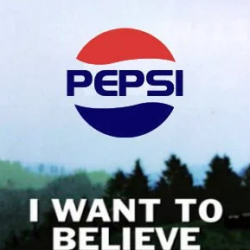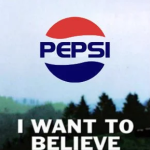During his State of the Union speech, President Bush and I both got a bit lost in the details of his domestic policy initiatives. Fortunately, WhiteHouse.gov offers a handy summary in language so simple that even a president can understand. So let's look at that "Twenty in Ten" energy proposal.
The purported goal is to reduce America's gasoline consumption by 20 percent in 10 years. That sounds ambitious until you realize that Blade Runner is set in 2019, which is only 12 years from now, and hybrid SUVs don't sound quite as impressive when compared with replicants and flying billboards advertising the off-world colonies.
Bush's primary proposal for accomplishing this reduction in gasoline consumption is to substitute the consumption of ethanol and other next-generation biofuels. This, he says, will account for a 15-percent reduction in gasoline use. Add to that another 5-percent reduction due to changes in Corporate Average Fuel Economy standards and, voila, 20 in 10.
The bit about CAFE standards was one of the parts in the speech that startled me. Was this failed Texas wildcatter really suggesting a raise in fuel economy standards? Bush had spent his first six years in office fighting against such a raise, had he changed his mind?
Well, no. Here's what that White House fact sheet says:
Reforming And Modernizing Corporate Average Fuel Economy (CAFE) Standards For Cars And Extending The Current Light Truck Rule.
"Reforming and modernizing" standards is not the same thing as "raising" them. It's hard to know exactly what "reforming and modernizing" means — which is why they chose such language. It's probably a strong hint, though, that this was the same language Bush used about his attempt to abolish Social Security. I suppose you could say that Bush is also "reforming and modernizing" Iraq.
The "light truck rule" referred to there mandates a fleetwide average of 24 mpg by the year 2011, which would be almost as fuel efficient as Henry Ford's fleetwide average of 25 mpg back in 1908. If that's the rate of technological progress we're shooting for, we probably won't see those off-world colonies any time soon. (The Japanese automakers are way ahead of Detroit, but still, Honda's replicant doesn't yet look anything like Sean Young.)
Bush's Gore-ish enthusiasm for biofuels seems more promising, although again it's difficult to see what's "ambitious" about what is essentially a methadone clinic for gasoline addicts:
Increasing The Supply Of Renewable And Alternative Fuels By Setting A Mandatory Fuels Standard To Require 35 Billion Gallons Of Renewable And Alternative Fuels In 2017 – Nearly Five Times The 2012 Target Now In Law. In 2017, this will displace 15 percent of projected annual gasoline use.
The only way that Bush can imagine reducing gasoline consumption is by massively increasing our consumption of something else. America currently produces just over 5 billion gallons of ethanol. Bush's goal is for America to consume seven times that amount 10 years from now. So hey, Road trip!
Despite his stated goal — consuming less gasoline — the president can't seem to imagine the more obvious, more direct approach to this goal, i.e. driving less. Which makes this whole proposal sound like one of those weight-loss pill ads that promises results without diet or exercise.
If Bush really wanted to achieve a "20 in 10" reduction in gasoline consumption, he should recommit to fixing our urban schools. The dismal reality of these schools — and the even more dismal perception of them — is one of the biggest obstacles to reducing America's massive gasoline consumption habit.
Let me step back and explain. To reduce consumption, we need to reduce the demand for consumption. That means changing the conditions that contribute to that demand. That means things like:
investing in rail transport
investing in mass transit
restraining suburban sprawl
promoting walkable communities.
Only one of these is mentioned even in passing in the president's proposal — a $175 million demonstration project on "curbing [traffic] congestion." Noting that "In 2003, drivers in America's 85 most congested urban areas experienced 3.7 billion hours of travel delay and wasted 2.3 billion gallons of fuel," the demonstration project calls for "innovative ideas":
These ideas include congestion pricing, commuter transit services, commitments from employers to expand work schedule flexibility, and faster deployment of real-time traffic information.
Good ideas, but on a dismissively inadequate scale. If we really want to reduce gasoline consumption — not just the 2.3 billion gallons wasted during travel delays, but the billions more consumed during even our rare delay-free commutes — then we need to eliminate those commutes, not just streamline them. (Adding lanes to our main traffic arteries is not the most promising way to reduce gasoline consumption over 10 years.)
That means living closer to where we work. For that to happen, we need to address the things that prevent many families from choosing to live closer to where the jobs are, the things that are causing both families and employers to relocate further out in automobile-shaped, unwalkable exurbia. One of the primary causes of this is the dismal perception of our urban schools. And the best way to change that perception is to change the reality — to make those schools attractive to families.
















